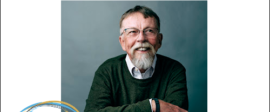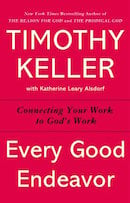A Dark Path Leads to Light
Blog / Produced by The High Calling
Vincent Van Gogh, one of the most brilliant impressionist painters, spent much of his life in pain. He must have died believing he had accomplished nothing because he failed to become well known during his lifetime. In fact, he failed at nearly everything.
He didn’t care for his first job as an art dealer in The Hague. Giving it up, he studied theology and became a pastor to the families of coal miners in one of the most destitute regions of The Netherlands. His empathy for the people of his church led him to give them almost everything he owned, and the church fired him. Lost and confused, in 1880 Van Gogh took up drawing.
He worked alone as an apprentice at his art for years. His brother, Theo, encouraged a friendship between Vincent and the painter Gauguin, who came to live with Vincent. But a hard winter and utter poverty wore Vincent down to madness. Just before Christmas in 1888, he cut off his ear. I wonder whether in the asylum, locked away from color and light, Van Gogh might have remembered his childhood as the son of a minister. I wonder whether he found solace in a grace that seemed impossible on earth.
In and out of the asylum, depressed and haunted by failure, Van Gogh nevertheless persisted. Whenever the doctors allowed him to go out, he tramped across the fields, set up his easel, took up his brushes, and painted, seeking for the truth on canvas. Those paintings from his last years are such wonders of light and shape that no painter has been able to equal them.
As Van Gogh grew older, it must have grieved him terribly that his paintings never sold—that is, almost never. Records show that he might have sold one painting in 1894 for a little over $50. Ironically, after his death, his paintings have spread joy to millions of people around the world. In 1987, his painting Sunflowers sold for $57.8 million.
I love Van Gogh, not only for his brilliant paintings, but also for his faithfulness to his calling. The following poem imagines his terror and obsession during the years after he cut off his ear.
VAN GOGH*
All right, I love him for the way
he painted Vermilion! Orange! jagged as
shouts, and when no one bought them,
no one even heard him,
he shouted louder,
Sunflowers! Self Portrait!
and years later, not one sold,
he cut off his own ear.
Then he had to bring it back on canvas
hundreds of times,
in the brass swelling
of the bell
that called him to dinner,
in the complicated iris
at the end of the asylum path.
Think how stooping
at a fork in the road
he might have seen a stone-shaped ear,
how the human heart,
once it knows what it needs,
will find it everywhere, how
in the curve of his delicately padded cell
one starry night, he must have murmured
everything he had ever wanted to say
straight into the ear of God.
*This poem is excerpted from Jeanne Murray Walker’s A DEED TO THE LIGHT,
University of Illinois Press, 2004. For more information or to order the book,
see www.press.uillinois.edu/s04/walker.html.





